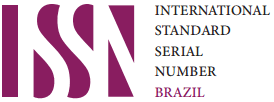Effects of cyberbullying on adolescents’ mental health
DOI:
https://doi.org/10.25118/2763-9037.2015.v5.171Keywords:
Internet, adolescent, violence, mental healthAbstract
Cyberbullying has been described as one or more individuals using electronic means with the intent to harm, inflict injury or discomfort, cause fear or a feeling of despair in the individual who is the target of aggression. These actions may be done by e-mail, chat rooms, cell phones, instant messaging, online polling booths. Evidence indicates that 20-40% of adolescents will have at least one cyberbullying experience and the number of cybervictims is increasing. The main problem caused by cyberbullying is damage to the victim’s reputation, with repercussions that may be even greater than those observed in traditional bullying. Victimization related to cyberbullying is associated with social and behavioral problems, including depressive symptoms, psychoactive substance abuse, suicide attempts, and suicide, and can be considered a significant mental health problem among adolescents.
Downloads
Metrics
References
Schouten AP, Valkenburg PM, Peter J. Precursors and underlying processes of adolescents’ online self-disclosure: developing and testing an “Internet attribute-perception” model. Media Psychol. 2007;10:292-315. DOI: https://doi.org/10.1080/15213260701375686
Valkenburg PM, Peter J. Online communication among adolescents: an integrated model of its attraction, opportunities, and risks. J Adolesc Health. 2011;48:121-7. DOI: https://doi.org/10.1016/j.jadohealth.2010.08.020
Valkenburg PM, Peter J. Social consequences of the internet for adolescents: a decade of research. Curr Dir Psychol Sci. 2009;18:1-5. DOI: https://doi.org/10.1111/j.1467-8721.2009.01595.x
Comitê Gestor da Internet no Brasil. TIC domicílios e empresas 2011 [Internet]. Pesquisa sobre o uso das tecnologias de informação e comunicação no Brasil. 2012 [cited 2013 Feb 20]. http://op.ceptro.br/cgi-bin/cetic/tic-domicilios-e-empresas-2011.pdf
Slonje R, Smith PK. Cyberbullying: another main type of bullying? Scand J Psychol. 2008;49:147-54. DOI: https://doi.org/10.1111/j.1467-9450.2007.00611.x
Tokunaga RS. Following you home from school: a critical review and synthesis of research on cyberbullying victimization. Comput Human Behav. 2010;26:277-87. DOI: https://doi.org/10.1016/j.chb.2009.11.014
Ybarra ML, Mitchell KJ, Wolak J, Finkelhor D. Examining and associated distress related to Internet harassment: Findings from the Second Youth Internet Safety Survey. Pediatrics. 2006;118:e1169-77. DOI: https://doi.org/10.1542/peds.2006-0815
Bottino SMB, Gomez CR, Correa VLA, Ribeiro WS. Relações entre cyberbullying e problemas de saúde mental em adolescentes. Cad Saude Publica. 2014. In press.9. Buhrmester D, Prager K. Patterns and functions of self-disclosure during childhood and adolescence. In: Rotenberg KJ, ed. Disclosure processes in children and adolescents. Cambridge: Cambridge University Press; 1995. p. 10-56. DOI: https://doi.org/10.1017/CBO9780511527746.002
Davis K. Coming of age online: the developmental underpinnings of girls’ blogs. J Adolesc Res. 2010;25:145-71. DOI: https://doi.org/10.1177/0743558409350503
Schmitt KL, Dayanim S, Matthias S. Personal homepage construction as an expression of social development. Dev Psychol. 2008;44:496-506. DOI: https://doi.org/10.1037/0012-1649.44.2.496
Instituto Brasileiro de Opinião Pública e Estatística (IBOPE). Gerações Y e Z: juventude digital [Internet]. [cited 2014 Aug 2]. http://www4.ibope.com.br/download/geracoes%20_y_e_z_divulgacao.pdf
Instituto Brasileiro de Geografia e Estatística (IBGE). Pesquisa Nacional por Amostra de Domicílios (PNAD) [Internet]. 2011 [cited 2015 Jan 19]. http://www.ibge.gov.br/home/estatistica/populacao/trabalhoerendimento/pnad2011/
Spizzirri RCP, Wagner A, Mosmann CP, Arman AB. Adolescência conectada: mapeando o uso da internet em jovens internautas. Psicol Argum Curitiba. 2012;30:327-35. DOI: https://doi.org/10.7213/psicolargum.v30i69.23288
Fundo das Nações Unidas para a Infância (UNICEF). O uso da internet por adolescentes [Internet]. 2013 [cited 2014 Jul 26]. http://www.unicef.org/brazil/pt/br_uso_internet_adolescentes.pdf
Council on Communications and Media. Children, adolescents, and the media. Pediatrics. 2013;132:958-61. DOI: https://doi.org/10.1542/peds.2013-2656
Olweus D. Bullying in school: what we know and what we can do. Oxford: Blackwell; 1993.
Menesini E, Nocentini A, Palladino BE, Frisén A, Berne S, Ortega-Ruiz R, Calmaestra J, Scheithauer H, et al. Cyberbullying definition among adolescents: a comparison across six European countries. Cyberpsychol Behav Soc Netw. 2012;15:455-63. DOI: https://doi.org/10.1089/cyber.2012.0040
Kowalski RM, Limbert SP. Electronic bullying among middle school students. J Adolesc Health. 2007;41:S22-S30. DOI: https://doi.org/10.1016/j.jadohealth.2007.08.017
National Housing Corporation (NCH). Putting U in the picture – Mobile phone bullying survey [Internet]. 2005 [cited 015 Jan 19]. http://www.avaproject.org.uk/media/28482/mobile_bullying_report.pdf
Nocentini A, Calmaestra J, Schultze-Krumbholz A, Scheithauera H, Ortegaa R, Menesini E. Cyberbullying: labels, behaviours and definition in three European countries. Austr J Guid Couns. 2010;20:129-42. DOI: https://doi.org/10.1375/ajgc.20.2.129
Ortega R, Elipe P, Mora-Merchan JA, Genta ML, Brighi A, Guarini A, et al. The emotional impact of bullying and cyberbullying on victims: a European cross-national study. Aggress Behav. 2012;38:342-56. DOI: https://doi.org/10.1002/ab.21440
Wang J, Nansel TR, Iannotti RJ. Cyber and traditional bullying: differential association with depression. J Adolesc Health. 2011;48:415-7. DOI: https://doi.org/10.1016/j.jadohealth.2010.07.012
Litwiller BJ, Brausch AM. Cyber bullying and physical bullying in adolescent suicide: the role of violent behavior and substance use. J Youth Adolesc. 2013;42:675-84. DOI: https://doi.org/10.1007/s10964-013-9925-5
Hinduja S, Patchin JW. Bullying, cyberbullying and suicide. Arch Suicide Res. 2010;14:206-21. DOI: https://doi.org/10.1080/13811118.2010.494133
Pérez C, Astudillo J, Varela TJ, Lecannelier FA. Evaluación de la efectividad del Programa Vínculos para la Prevención e Intervención del Bullying en Santiago de Chile. Psicol Esc Educ. 2013;17:163-72. DOI: https://doi.org/10.1590/S1413-85572013000100017
Hui EKP, Tsang SKM, Law BCM. Combating school bullying through developmental guidance for positive youth development and promoting harmonious school culture. Sci World J. 2011;11:2266-77. DOI: https://doi.org/10.1100/2011/705824
Bostic JQ, Brunt CC. Cornered: an approach to school bullying and cyberbullying, and forensic implications. Child Adolesc Psychiatr Clin N Am. 2011;20:447-65. DOI: https://doi.org/10.1016/j.chc.2011.03.004
Downloads
Published
How to Cite
Conference Proceedings Volume
Section
License

This work is licensed under a Creative Commons Attribution-NonCommercial 4.0 International License.
Debates em Psiquiatria allows the author (s) to keep their copyrights unrestricted. Allows the author (s) to retain their publication rights without restriction. Authors should ensure that the article is an original work without fabrication, fraud or plagiarism; does not infringe any copyright or right of ownership of any third party. Authors should also ensure that each one complies with the authorship requirements as recommended by the ICMJE and understand that if the article or part of it is flawed or fraudulent, each author shares responsibility.
Attribution-NonCommercial 4.0 International (CC BY-NC 4.0) - Debates em Psiquiatria is governed by the licencse CC-By-NC
You are free to:
- Share — copy and redistribute the material in any medium or format
- Adapt — remix, transform, and build upon the material
The licensor cannot revoke these freedoms as long as you follow the license terms. Under the following terms:
- Attribution — You must give appropriate credit, provide a link to the license, and indicate if changes were made. You may do so in any reasonable manner, but not in any way that suggests the licensor endorses you or your use.
- NonCommercial — You may not use the material for commercial purposes.
No additional restrictions — You may not apply legal terms or technological measures that legally restrict others from doing anything the license permits.






























